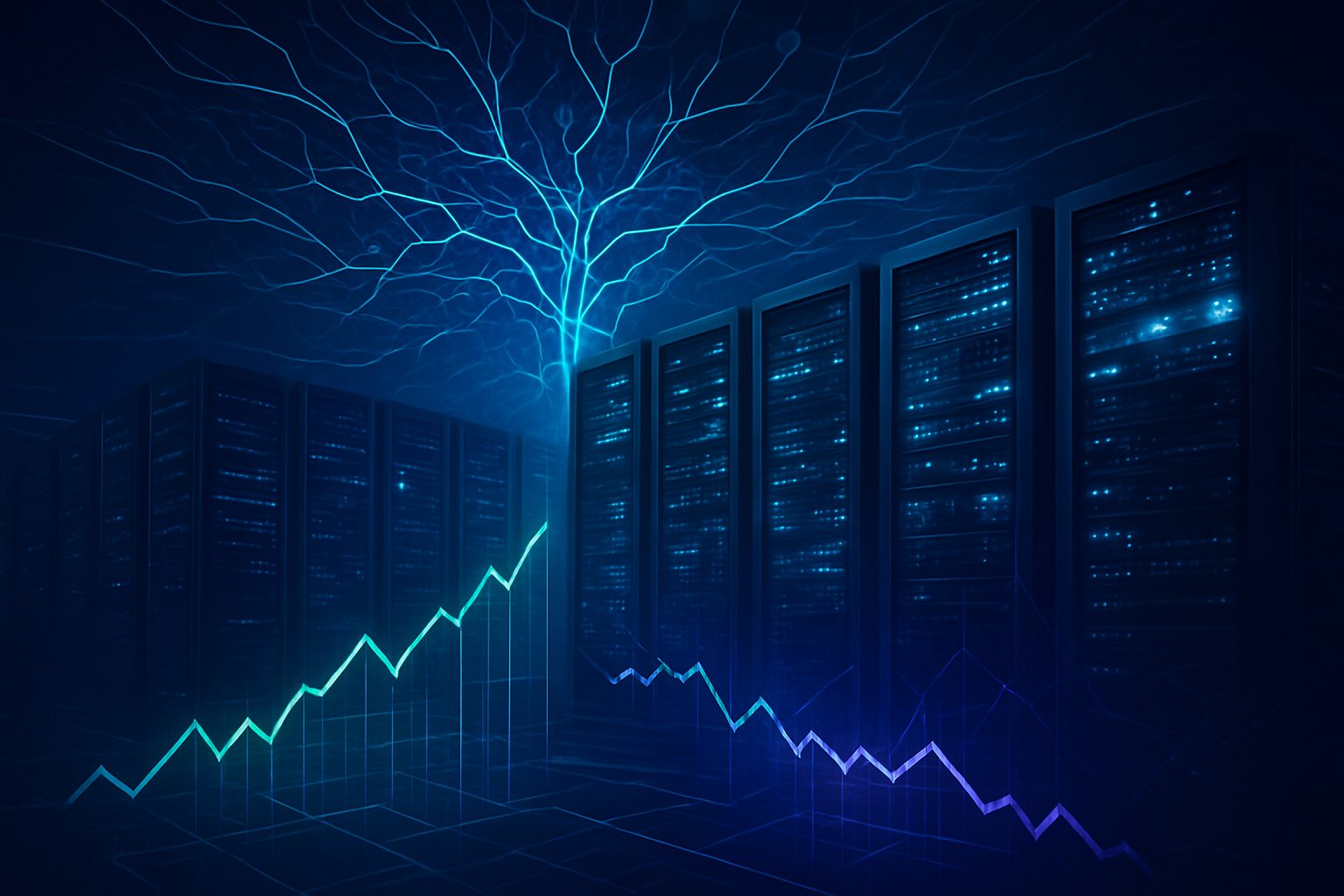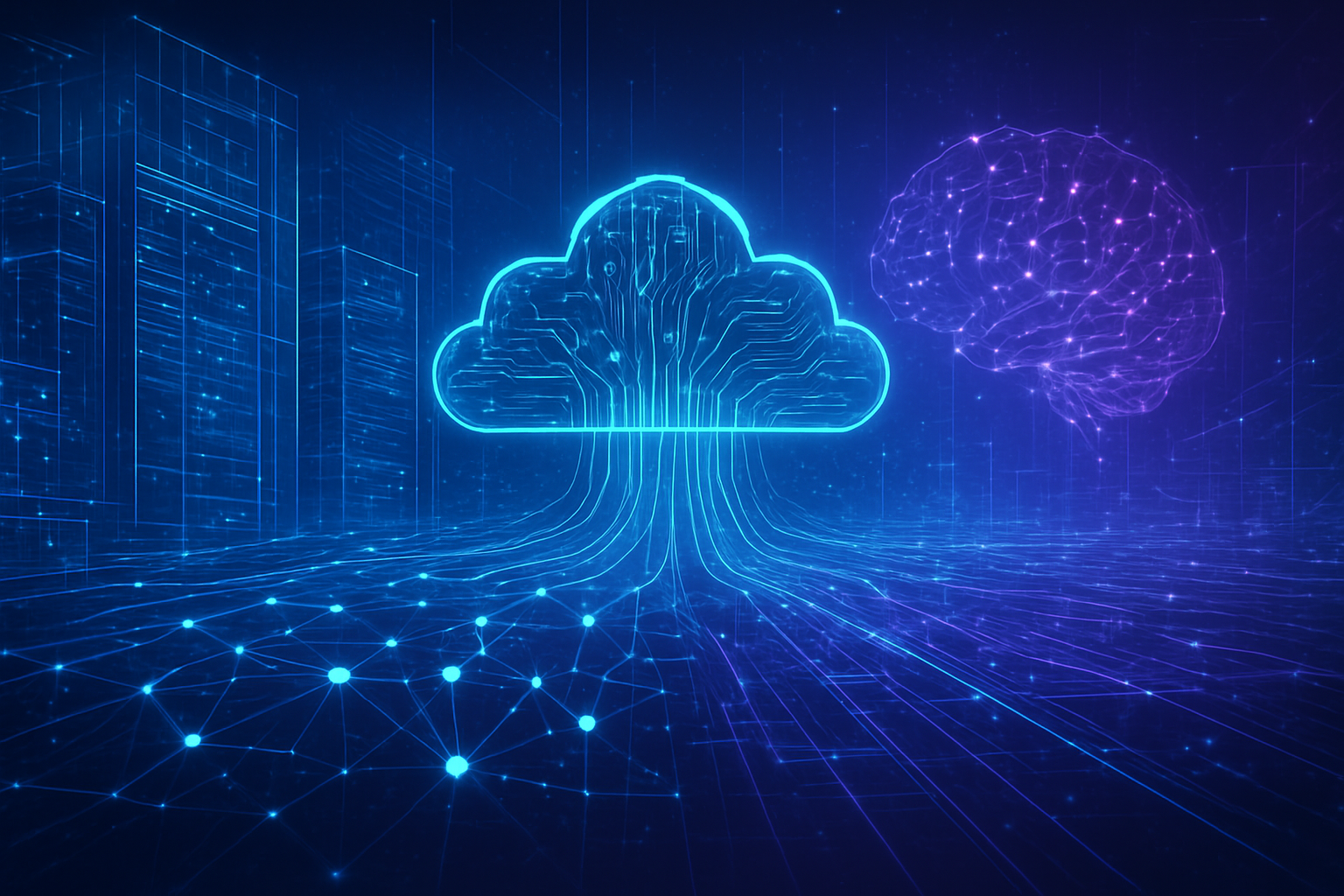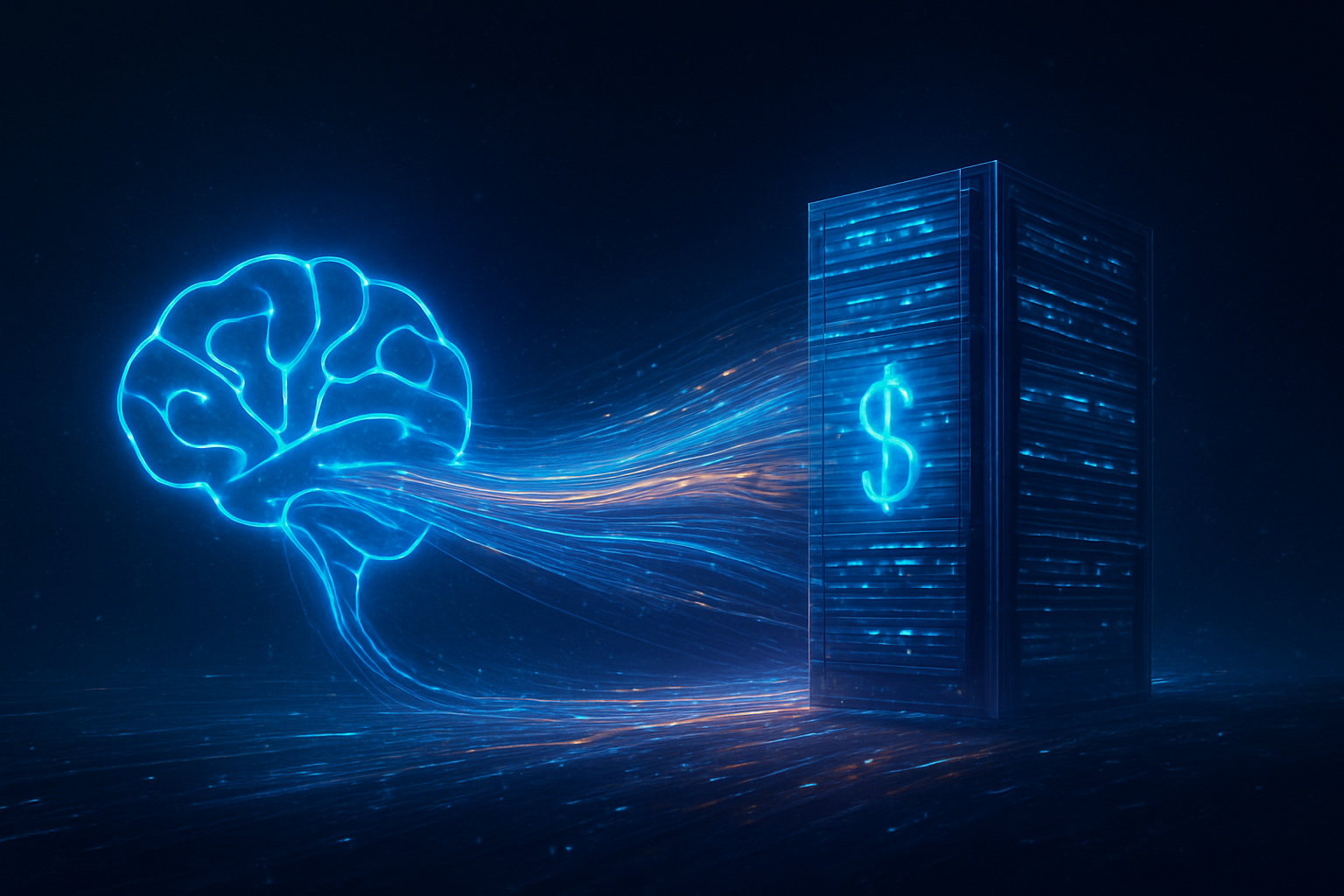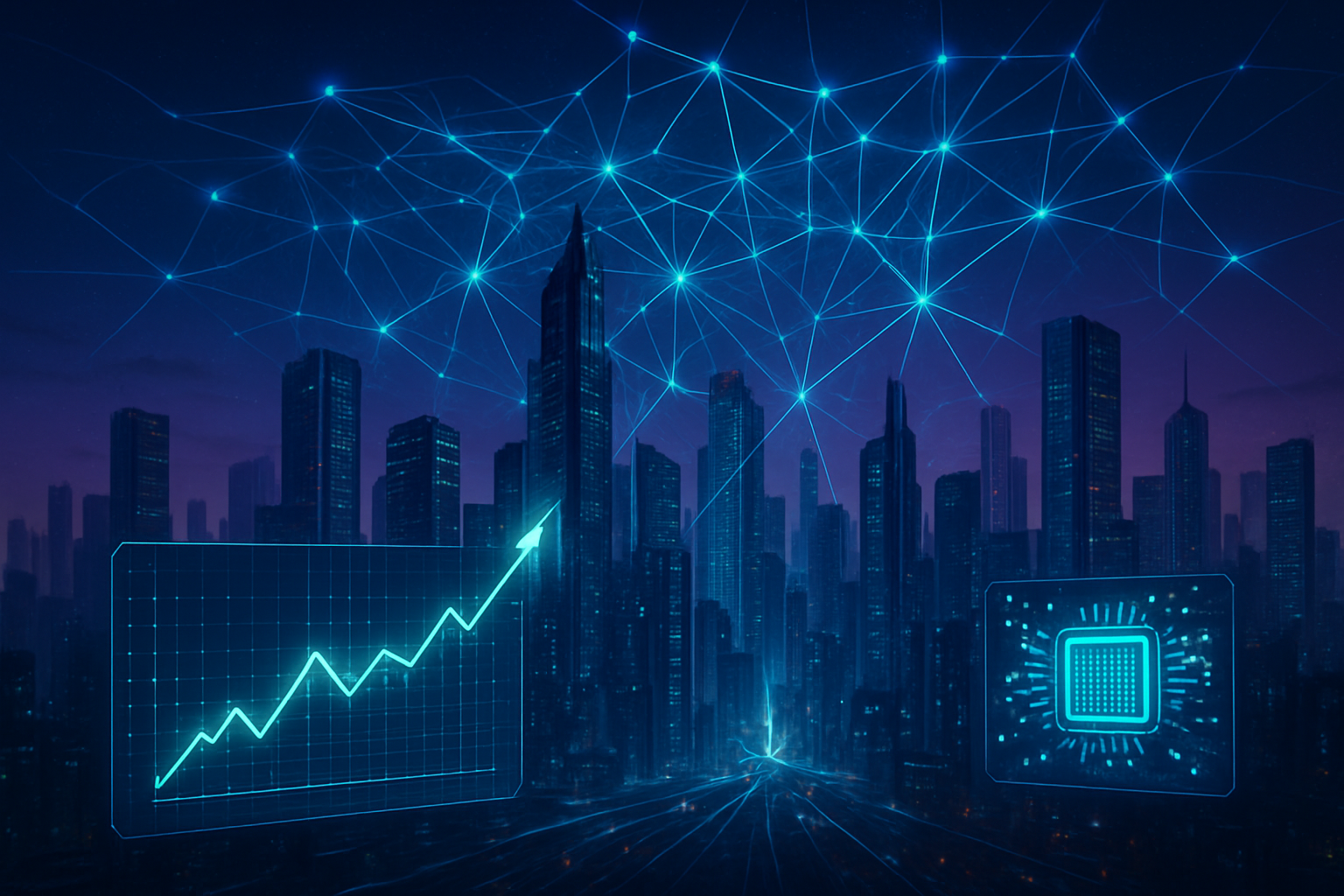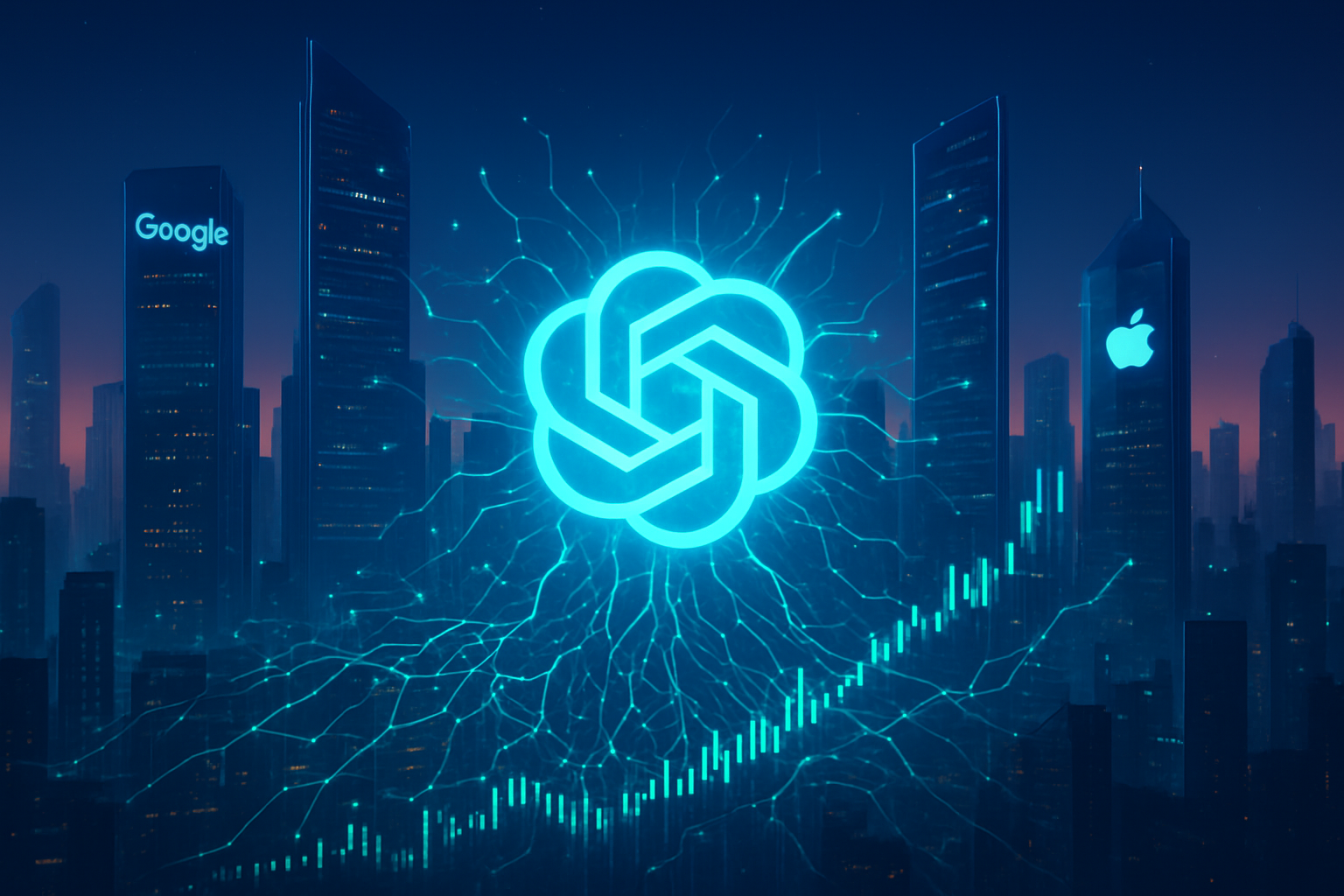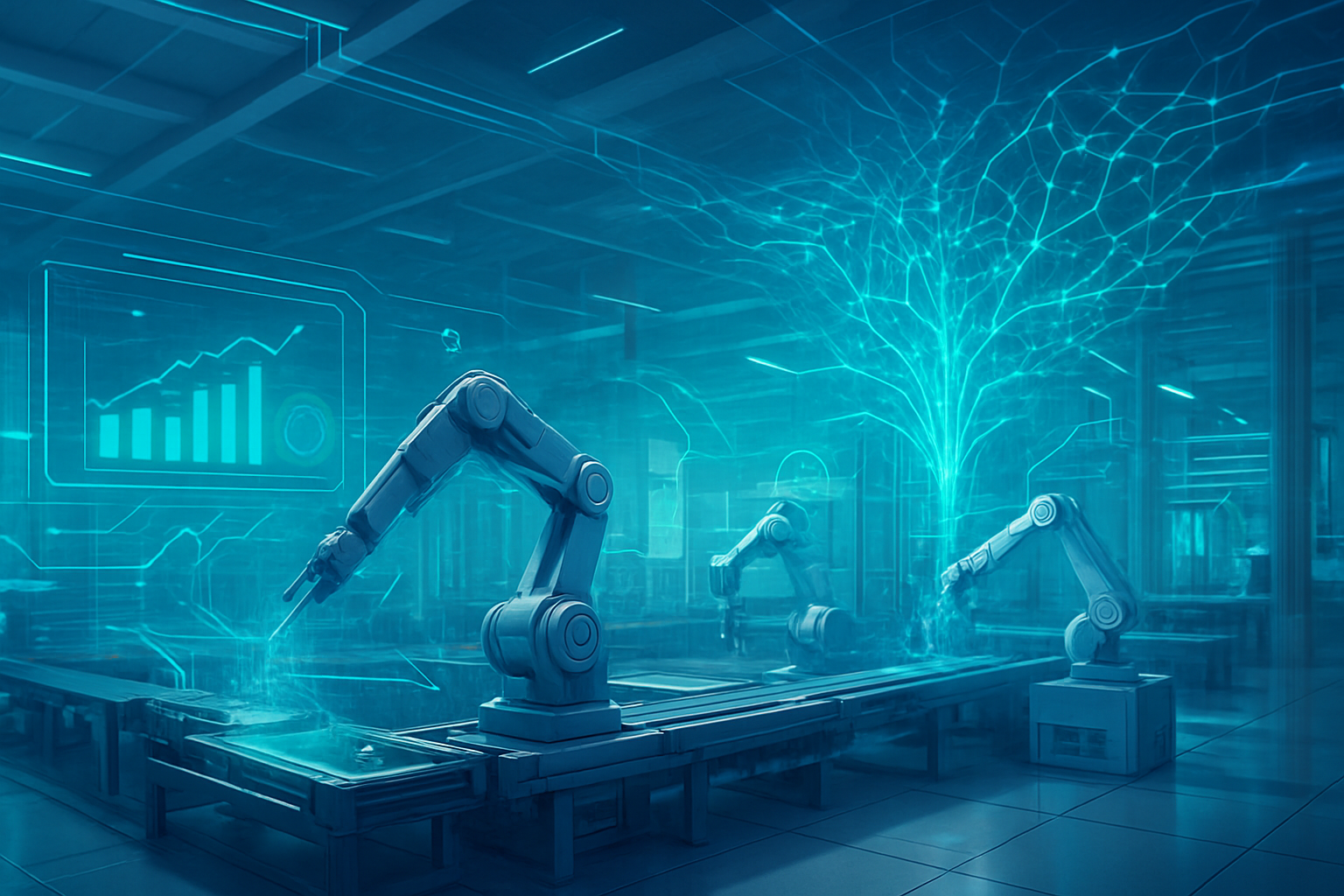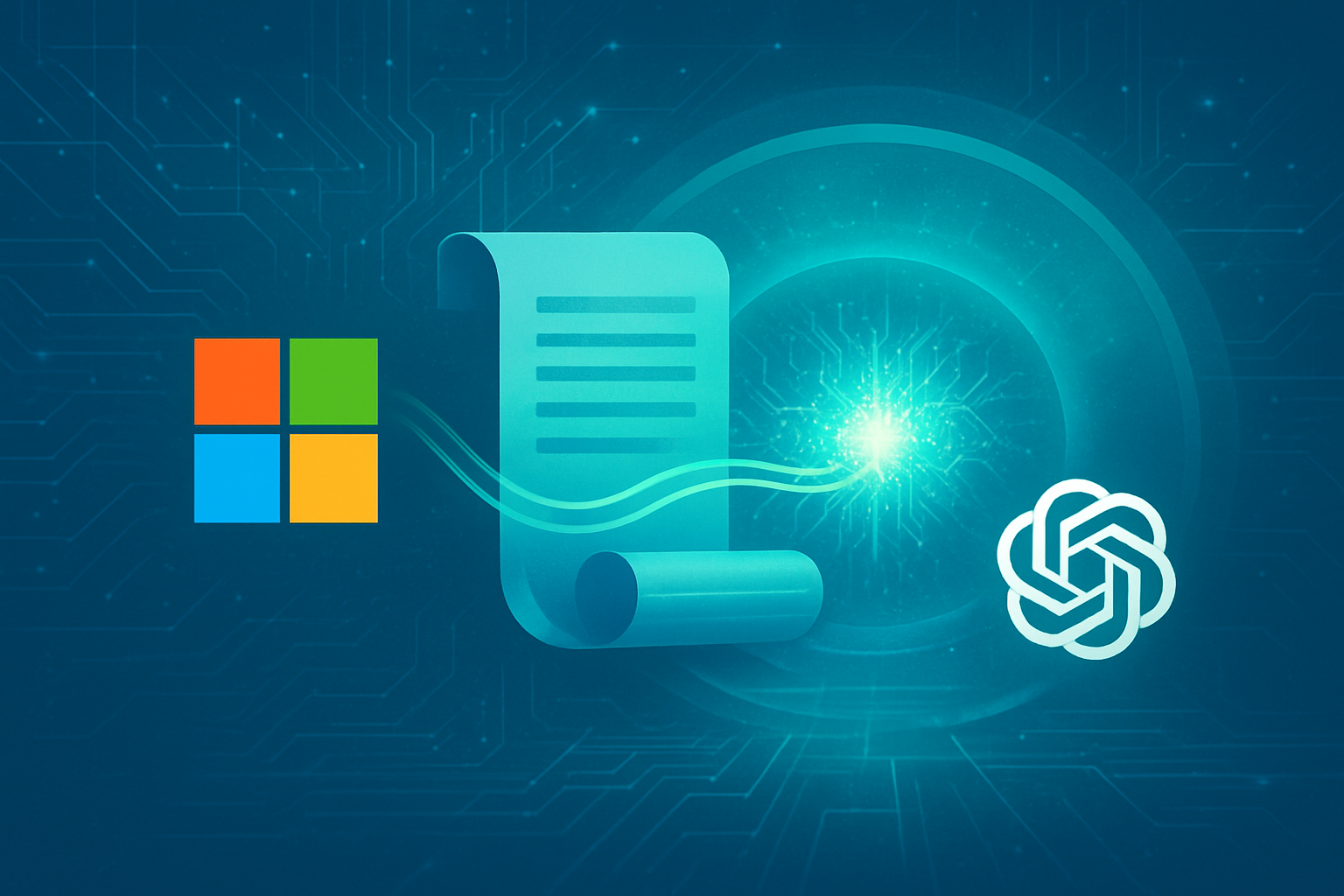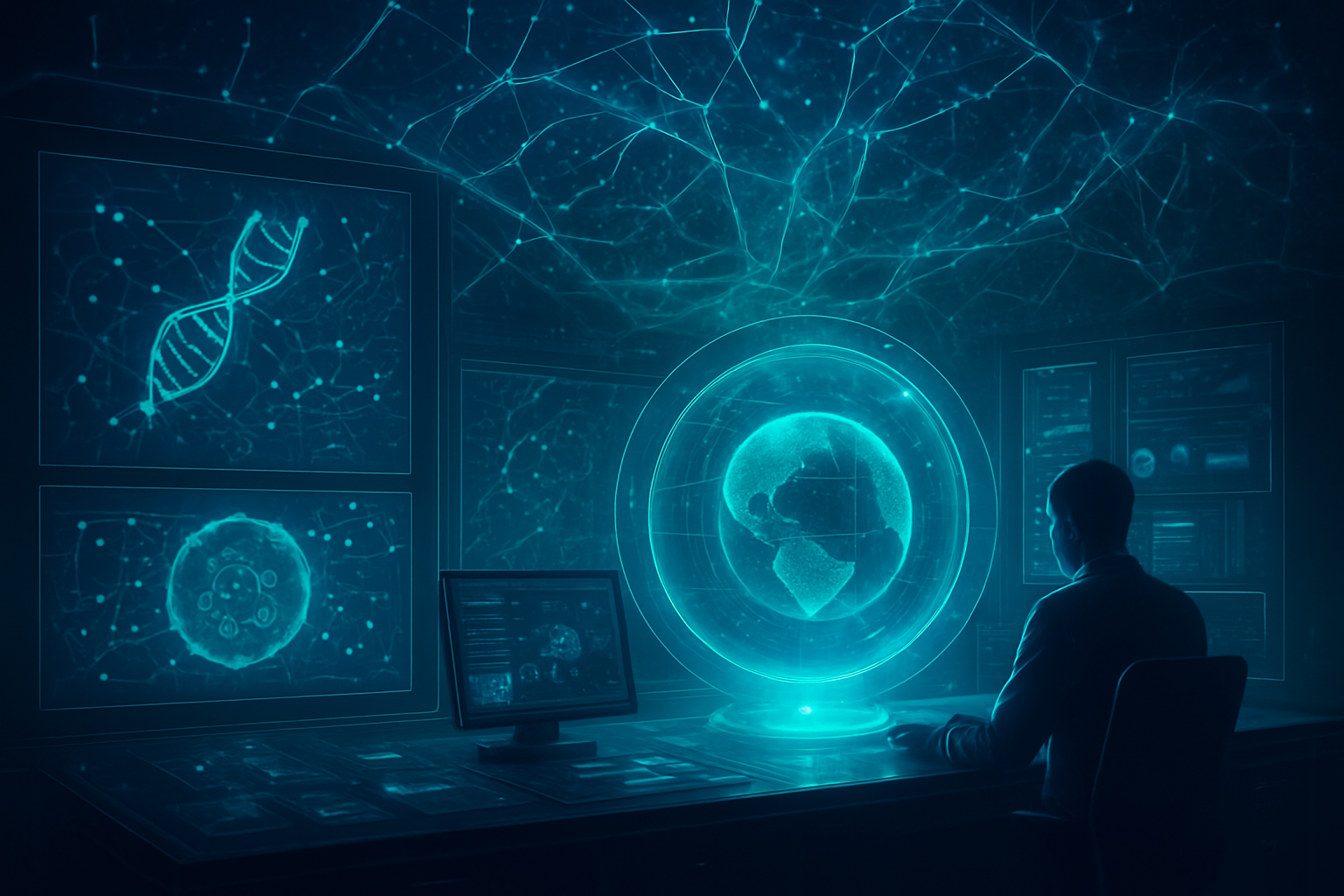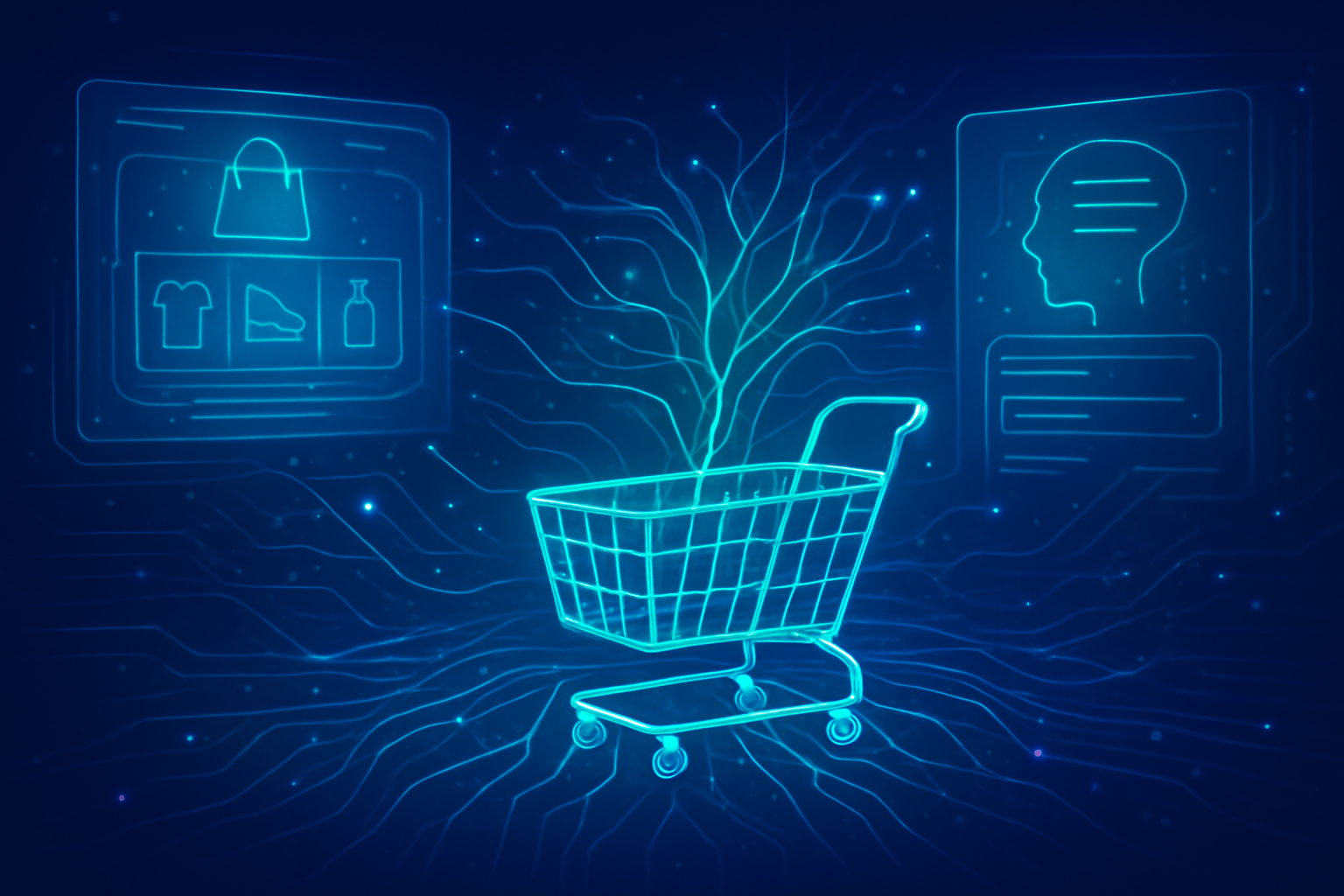In a landmark move poised to reshape the artificial intelligence landscape, Amazon.com Inc. (NASDAQ: AMZN) and OpenAI have officially announced a sprawling seven-year, $38 billion strategic partnership. The monumental deal, unveiled on November 3, 2025, sees OpenAI leveraging Amazon Web Services (AWS) as a primary backbone for its rapidly expanding AI workloads, granting the ChatGPT maker access to hundreds of thousands of Nvidia graphics processing units (GPUs), with the flexibility to scale to tens of millions of central processing units (CPUs). This collaboration is a significant win for Amazon, bolstering its position in the fiercely competitive AI infrastructure race and accelerating the growth trajectory of its cloud computing unit, AWS, which had already seen its growth accelerate to 20% in the third quarter of 2025.
The immediate market reaction to this colossal alliance was a palpable surge across the tech sector. Amazon's shares jumped between 4.5% and 5% on Monday's market open, hitting a new record high and signaling renewed investor confidence in the e-commerce and cloud giant's AI strategy. This rally ignited broader optimism, contributing to a 1.5% climb for the "Magnificent Seven" megacaps and generally fueling the artificial intelligence trade. However, as tech stocks celebrated, the cryptocurrency market experienced a notable downturn, with Bitcoin sinking 3% and struggling to maintain its upward momentum, falling below $110,000. This crypto sell-off was accompanied by a significant decline in inflows to Bitcoin ETFs, suggesting a shift in institutional interest away from digital assets and towards the booming, AI-driven traditional stock market.
The Technical Backbone of Tomorrow's AI
Amazon Web Services (AWS) and OpenAI's multi-year, strategic partnership, valued at $38 billion over seven years, marks a significant development in the artificial intelligence landscape. This substantial agreement empowers OpenAI to leverage AWS's world-class infrastructure to run and scale its critical AI workloads, encompassing inference for ChatGPT, advanced model training, and the burgeoning field of "agentic AI." Under the technical specifics of this deal, OpenAI will gain immediate and expanding access to hundreds of thousands of state-of-the-art NVIDIA Corporation (NASDAQ: NVDA) GPUs, including the GB200s and GB300s, delivered through Amazon EC2 UltraServers. The partnership also allows for scaling to tens of millions of CPUs to support rapid growth in agentic workloads. AWS is committed to building dedicated, sophisticated architectural infrastructure specifically optimized for maximum AI processing efficiency and low-latency performance, with initial capacity slated for deployment by the end of 2026 and further expansion planned into 2027 and beyond.
This partnership represents a notable departure from OpenAI's previous, near-exclusive reliance on Microsoft Corporation (NASDAQ: MSFT) Azure for its cloud computing needs. Following a recent corporate restructuring and an amendment to its agreement with Microsoft, OpenAI has secured the freedom to diversify its cloud providers. This strategic shift towards a multi-cloud approach underscores the immense and "insatiable demand for computing power" required for scaling frontier AI models. OpenAI's commitments now extend across multiple major cloud platforms, including significant deals with Microsoft Azure ($250 billion), Oracle Corporation (NYSE: ORCL) ($300 billion), CoreWeave ($22.4 billion), and Alphabet Inc. (NASDAQ: GOOGL) Google Cloud (undisclosed amount), alongside this new AWS deal. This diversification mitigates risks associated with relying on a single provider and provides redundancy and powerful negotiating leverage, reflecting the "brutal reality of AI infrastructure demands" that no single cloud provider can meet alone for a company of OpenAI's scale. Furthermore, Amazon had already integrated OpenAI's open-weight models, such as gpt-oss-120b and gpt-oss-20b, into its Amazon Bedrock service earlier, making these models accessible to AWS customers.
Initial reactions from the AI research community and industry experts have been largely positive regarding the strategic implications for both companies and the broader AI ecosystem. Amazon's stock saw a significant jump of 5-6% following the announcement, signaling strong investor confidence in AWS's bolstered position in the competitive AI infrastructure market. OpenAI CEO Sam Altman highlighted that "scaling frontier AI requires massive, reliable compute," and this partnership "strengthens the broad compute ecosystem" essential for advancing AI. Industry analysts view the deal as a "hugely significant" endorsement of AWS's capabilities to deliver the necessary scale for OpenAI's demanding workloads. However, the sheer scale of OpenAI's infrastructure commitments, totaling approximately $1.4 trillion across various providers over the next decade, has also sparked discussions within the community about a potential "investment bubble" in the AI sector. Beyond the immediate financial and infrastructural impacts, the deal also validates the multi-cloud strategy for large enterprises navigating the complexities of advanced AI development.
Reshaping the AI Competitive Landscape
This development has significant competitive implications for major AI labs and tech companies. For Amazon (NASDAQ: AMZN), the deal is a major win for AWS, addressing prior concerns from investors who feared it was falling behind rivals like Microsoft (NASDAQ: MSFT) and Google (NASDAQ: GOOGL) in the AI infrastructure domain. It positions AWS as a crucial backbone for OpenAI's ambitions, enhancing its market share in the cloud computing sector and validating its infrastructure capabilities. For OpenAI, the partnership diversifies its cloud compute ecosystem, reducing its prior near-exclusive reliance on Microsoft Azure, especially after recently renegotiating its deal with Microsoft to remove Microsoft's right of first refusal for cloud compute services. This move intensifies the competition among cloud providers (AWS, Azure, Google Cloud, Oracle) vying to host the massive workloads of leading AI developers. Microsoft, while still a major investor and partner, will now face increased competition for OpenAI's compute spend, although OpenAI has also committed to purchasing an additional $250 billion in Azure services.
The Amazon-OpenAI deal also presents potential disruptions and shifts in market positioning. By making OpenAI's models, including new open-weight reasoning models like gpt-oss-120b and gpt-oss-20b, available through AWS services such as Bedrock and SageMaker, the partnership streamlines AI deployment for AWS customers. This provides enterprise clients and developers with easier access to state-of-the-art AI technologies within AWS's established infrastructure, potentially accelerating AI adoption across various industries and making advanced AI more accessible. This strategy could disrupt existing AI service offerings that do not have such direct access to leading models or the underlying compute power. Furthermore, Amazon's dual strategy of supplying Nvidia (NASDAQ: NVDA) GPUs to OpenAI while also developing and deploying its custom Trainium2 chips for its $8 billion investment in Anthropic, signals a broader attempt to influence the chip market and potentially reduce reliance on Nvidia's monopoly, creating a more diverse and competitive AI hardware landscape in the long run.
For AI startups, this mega-deal presents both opportunities and challenges. On one hand, the democratized access to OpenAI's models through AWS could lower the barrier to entry for some startups, allowing them to leverage powerful AI capabilities without prohibitive infrastructure investments. This broader availability of cutting-edge models and robust infrastructure may foster more innovation within the AWS ecosystem. On the other hand, the massive scale of investment and strategic alliances between tech giants and leading AI labs like OpenAI could make the competitive landscape even more challenging for smaller, independent AI companies trying to secure funding, talent, and computational resources. The sheer financial commitment ($38 billion for OpenAI from Amazon, and an additional $250 billion for Azure from OpenAI) highlights the immense capital required to operate at the frontier of AI, potentially leading to increased consolidation and making it harder for startups to compete without significant backing.
Broader Implications for the AI Ecosystem
The recently announced $38 billion, seven-year strategic partnership between Amazon Web Services (AWS) and OpenAI marks a pivotal moment in the rapidly evolving artificial intelligence landscape, signifying an intensified "AI arms race" and a shift in foundational AI development strategies. This massive deal will see AWS provide OpenAI with extensive cloud computing infrastructure, including hundreds of thousands of Nvidia (NASDAQ: NVDA) GPUs, essential for training and running OpenAI's advanced AI models like ChatGPT. The agreement is a direct consequence of OpenAI's amended partnership with Microsoft (NASDAQ: MSFT), which previously held a "right of first refusal" to be OpenAI's sole cloud provider, but now grants OpenAI greater flexibility to diversify its compute ecosystem. This move underscores the insatiable demand for computational power in frontier AI development and highlights a trend towards multi-cloud strategies even for leading AI research entities.
The impacts of this deal are far-reaching across the AI ecosystem. For Amazon (NASDAQ: AMZN), securing OpenAI as a major customer significantly bolsters AWS's standing in the highly competitive AI infrastructure market, validating its capabilities against rivals such as Microsoft Azure and Alphabet Inc. (NASDAQ: GOOGL) Google Cloud. It reinforces AWS's role as a critical backbone for AI innovation, even as Amazon simultaneously pursues a dual strategy of providing NVIDIA's premium GPUs while heavily investing in its custom AI chips (Trainium and Inferentia) for other key partners like Anthropic. For OpenAI, the partnership offers enhanced flexibility, improved resilience against potential single-vendor dependencies, and access to the colossal compute resources necessary to scale its existing offerings and accelerate the training of future, even more powerful, AI models. This diversification of cloud providers ensures a more robust and scalable foundation for OpenAI's ambitious AI development roadmap, which includes a commitment to spending $1.4 trillion on AI infrastructure to develop 30 gigawatts of computing resources.
However, this deal also raises potential concerns and offers insights when compared to previous AI milestones. The sheer scale of the $38 billion commitment, alongside OpenAI's $250 billion commitment to Microsoft Azure and other reported deals with Oracle (NYSE: ORCL) and potentially Google, highlights the staggering financial investment required for cutting-edge AI, prompting discussions about a possible "AI bubble." It also underscores the increasing concentration of AI power and compute resources among a handful of hyperscale cloud providers and major AI labs, potentially creating high barriers to entry for smaller players. Unlike Microsoft's initial investment in OpenAI, which established a deep, exclusive R&D and commercial partnership, the Amazon-OpenAI deal is primarily an infrastructure provision agreement, reflecting the maturation of the AI industry where access to massive, reliable compute has become a primary bottleneck, akin to the critical role of semiconductor manufacturing in previous tech eras. This move by OpenAI, following its recent corporate restructuring that granted it more operational freedom, signifies a strategic shift towards securing diversified compute capacity to meet the exponentially growing demands of advanced AI, emphasizing resilience and scalability as paramount for future breakthroughs.
The Road Ahead: Future Developments and Challenges
In the near term, OpenAI will immediately begin utilizing AWS's compute infrastructure, with a goal to fully deploy the hundreds of thousands of state-of-the-art NVIDIA (NASDAQ: NVDA) GPUs (GB200s and GB300s) on Amazon EC2 UltraServers by the end of 2026. This massive scale will support the inference for existing applications like ChatGPT and accelerate the training of OpenAI's next-generation models. For AWS customers, the partnership deepens existing collaborations, as OpenAI's open-weight foundation models are already available on Amazon Bedrock. This will likely lead to enhanced offerings within Bedrock, enabling a broader range of enterprises to leverage OpenAI's models for agentic workflows, coding, scientific analysis, and mathematical problem-solving with improved performance and reliability. Looking further ahead, the partnership is designed for continued growth well beyond 2027, allowing OpenAI to expand its compute capacity into tens of millions of CPUs as its AI ambitions evolve. This long-term commitment is expected to fuel the development of increasingly sophisticated AI capabilities and more deeply integrated AI services across the AWS ecosystem.
Despite the monumental potential, this partnership introduces several challenges and complexities. One significant aspect is Amazon's (NASDAQ: AMZN) concurrent, substantial investment in Anthropic, a direct competitor to OpenAI, totaling up to $8 billion. This positions Amazon as a primary cloud provider for two of the leading AI model developers, creating a delicate balancing act in terms of resource allocation, competitive intelligence, and strategic alignment. Furthermore, ensuring seamless integration and optimal performance of OpenAI's highly demanding and evolving AI workloads on AWS infrastructure will require continuous engineering effort. Managing the immense $38 billion financial commitment over seven years, alongside upholding robust security and data privacy standards across a multi-cloud environment, will also be critical. Experts predict this deal signals a definitive shift towards a multi-cloud AI era, where major AI companies diversify their infrastructure providers to ensure resilience and access to massive, reliable compute resources. This move is seen as strengthening AWS's position as a leading AI infrastructure provider and grants OpenAI greater strategic flexibility by lessening its dependence on any single cloud partner. Some analysts also suggest this partnership could be a pivotal moment for Amazon, solidifying its status as a key player in the accelerating AI race.
A New Era of AI Infrastructure
The $38 billion strategic partnership between Amazon Web Services (AWS) and OpenAI, announced on November 3, 2025, represents a transformative moment in the artificial intelligence industry. Key takeaways include OpenAI's strategic diversification of its cloud infrastructure beyond its previous reliance on Microsoft (NASDAQ: MSFT) Azure, and Amazon's (NASDAQ: AMZN) significant bolstering of its AWS segment in the fierce competition for AI compute workloads. The deal highlights the staggering financial and computational demands of cutting-edge AI development, with OpenAI committing to an estimated $1.4 trillion in AI infrastructure over the next decade across multiple providers.
This partnership holds immense significance in the history of AI, marking a pivotal moment in the competitive dynamics of the cloud and AI industries. For Amazon, the $38 billion deal is a significant endorsement of AWS's infrastructure capabilities and a strategic win in the intense race against rivals like Microsoft Azure and Alphabet Inc. (NASDAQ: GOOGL) Google Cloud to become the backbone of generative AI. It also underscores OpenAI's strategic intent to expand its compute ecosystem, moving beyond a near-exclusive reliance on one provider to ensure greater resilience, scalability, and potentially better price-performance for its demanding AI operations. The sheer scale of this investment, contributing to OpenAI's stated commitment of $1.4 trillion towards AI infrastructure, illustrates the unprecedented capital expenditure driving the AI boom and the increasing complexity of alliances among major tech players.
Looking ahead, the long-term impact of this deal will likely foster an even more competitive environment among cloud providers, pushing them to innovate further in specialized AI hardware and services. It suggests that leading AI developers may increasingly adopt multi-cloud strategies to optimize for cost, performance, and redundancy. What to watch for in the coming weeks and months includes how Microsoft responds to OpenAI's diversification, potentially by deepening its own AI investments and partnerships or by emphasizing the unique benefits of its Azure OpenAI Service. Further, observe the efficiency and performance gains OpenAI achieves by utilizing AWS's infrastructure, and whether this prompts other major AI players to similarly diversify their compute commitments. The ongoing race to secure critical GPU supplies and develop custom AI chips (like Amazon's Trainium and Inferentia) will also intensify, as companies vie for control over the foundational resources of the AI revolution.
This content is intended for informational purposes only and represents analysis of current AI developments.
TokenRing AI delivers enterprise-grade solutions for multi-agent AI workflow orchestration, AI-powered development tools, and seamless remote collaboration platforms.
For more information, visit https://www.tokenring.ai/.
